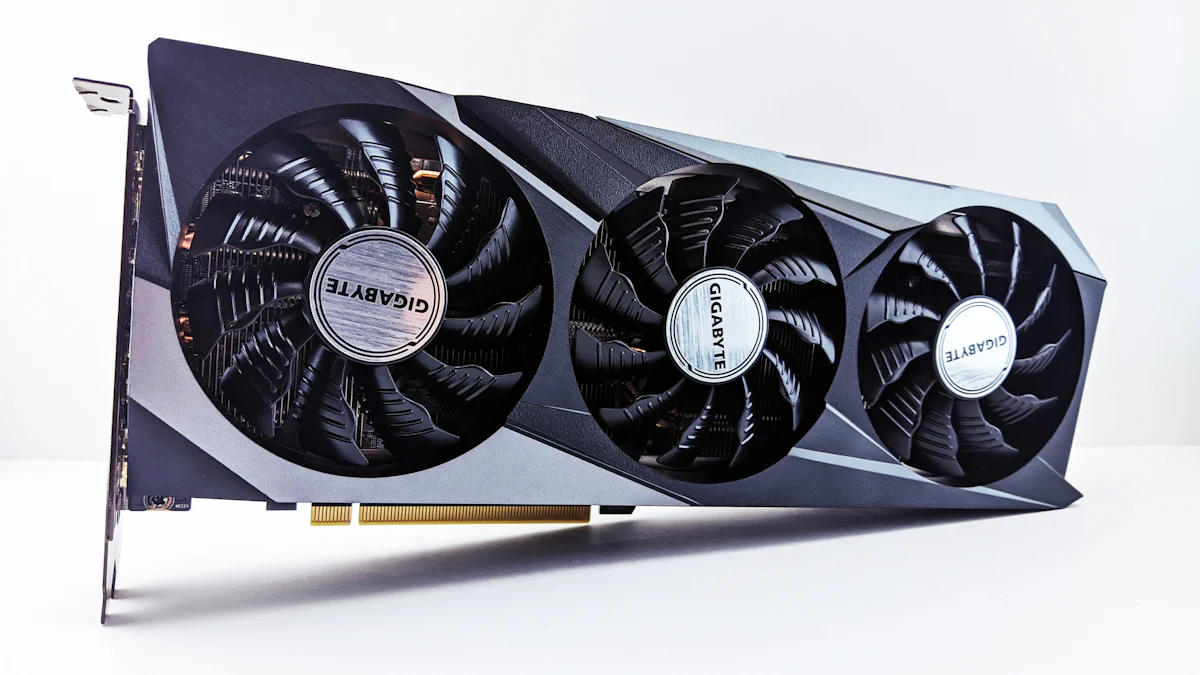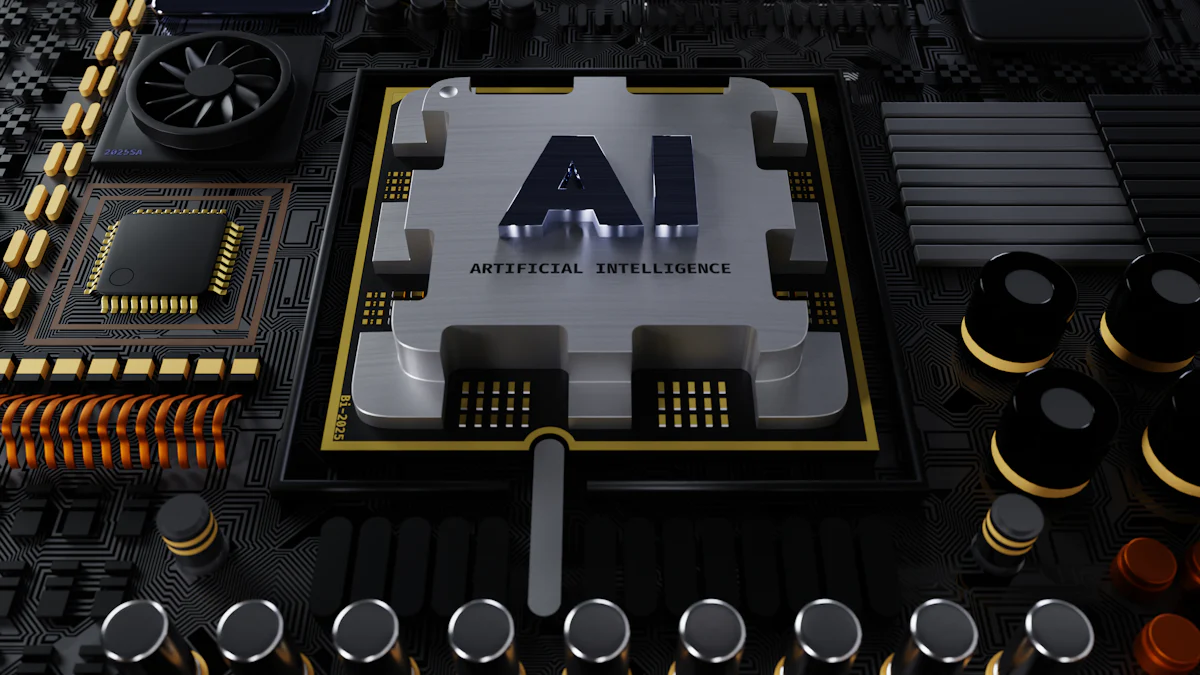Is AMD Ready to Compete with NVIDIA in AI?

AMD and NVIDIA stand as titans in the tech industry. AI has revolutionized various sectors, driving innovation and efficiency. The competition between these giants shapes the future of AI technology. AMD's market share increased from 12% to 19% within a year. This growth highlights AMD challenge NVIDIA. AI continues to transform industries with an expected annual growth rate of 37.3% between 2023 and 2030. The rivalry between AMD challenge NVIDIA will determine the next advancements in AI.
Current Market Landscape

NVIDIA's Dominance
Market Share and Revenue
NVIDIA commands a significant portion of the discrete GPU market. The company holds approximately 80% of the market share. This dominance translates into substantial revenue. NVIDIA's financial performance reflects its strong position. The company's revenue from AI-related products continues to grow. NVIDIA's leadership in the market remains unchallenged by most competitors.
Key Products and Technologies
NVIDIA's product lineup includes high-performance GPUs. The GeForce series targets premium gaming and AI applications. The H100 GPU stands out for its advanced capabilities. NVIDIA's CUDA software stack enhances the performance of its hardware. The company invests heavily in research and development. This investment drives continuous innovation in AI technologies.
AMD's Position
Market Share and Revenue
AMD has made significant strides in the GPU market. The company's market share increased from 17% to 19%. This growth indicates AMD's ability to challenge NVIDIA. AMD's revenue from AI chips has also seen an uptick. The company's financial performance shows positive trends. AMD's position in the market continues to strengthen.
Key Products and Technologies
AMD offers competitive products in the AI sector. The Instinct MI300X AI chip is a notable example. This chip provides a compelling price-performance ratio. AMD's Radeon series targets the mid-tier market. The company's ROCm software stack supports its hardware. AMD's focus on innovation drives its product development. The company aims to disrupt NVIDIA's dominance in AI.
Technological Capabilities

GPU Performance
NVIDIA's GPU Innovations
NVIDIA has consistently led the market with cutting-edge GPU innovations. The NVIDIA RTX Ada Generation GPUs exemplify the company's commitment to advancing AI workflows. These GPUs offer unparalleled performance, making them ideal for complex AI applications. The GeForce series remains a favorite among gamers and AI researchers alike. The H100 GPU stands out for its exceptional capabilities in deep learning and neural network training. NVIDIA's focus on high-performance computing ensures that the company stays ahead in the AI race.
AMD's GPU Innovations
AMD has made significant strides in GPU performance, challenging NVIDIA's dominance. The Instinct MI300X AI chip represents a major leap forward for AMD. This chip offers a compelling price-performance ratio, making it an attractive option for AI developers. AMD's Radeon series targets the mid-tier market, providing robust performance at a competitive price. The AMD Ryzen Threadripper PRO processors also contribute to advanced AI workflows. AMD's focus on innovation and performance positions the company as a formidable competitor in the AI sector.
Software Ecosystem
NVIDIA's CUDA and Software Stack
NVIDIA's software ecosystem plays a crucial role in its market leadership. The CUDA software stack enhances the performance of NVIDIA's hardware, making it a preferred choice for AI developers. CUDA provides a comprehensive suite of tools for developing and optimizing AI applications. NVIDIA's software stack includes libraries, frameworks, and development tools that streamline the AI development process. This robust ecosystem ensures that NVIDIA remains a dominant force in the AI market.
AMD's ROCm and Software Stack
AMD's ROCm software stack offers a strong alternative to NVIDIA's CUDA. ROCm supports a wide range of AI applications, providing developers with the tools needed to optimize performance. AMD's software stack includes libraries, frameworks, and development tools designed to work seamlessly with AMD hardware. ROCm's open-source nature allows for greater flexibility and customization. AMD's commitment to building a robust software ecosystem strengthens its position in the AI market.
Strategic Initiatives
Partnerships and Collaborations
NVIDIA's Strategic Alliances
NVIDIA has established numerous strategic alliances to maintain its leadership in the AI market. The company collaborates with leading tech firms and research institutions. These partnerships enhance NVIDIA's technological capabilities and market reach. For instance, NVIDIA works closely with Microsoft and Google. These collaborations focus on integrating NVIDIA's GPUs into cloud services. NVIDIA also partners with automotive companies like Tesla. This partnership aims to advance autonomous driving technologies.
AMD's Strategic Alliances
AMD has also formed key strategic alliances to challenge NVIDIA's dominance. The company collaborates with several tech giants and research organizations. AMD's partnerships aim to enhance its AI and data center solutions. For example, AMD works with Amazon Web Services (AWS). This collaboration integrates AMD's GPUs into AWS's cloud infrastructure. AMD also partners with research institutions to advance AI technologies. These alliances help AMD challenge NVIDIA in various sectors.
Research and Development
NVIDIA's R&D Investments
NVIDIA invests heavily in research and development to stay ahead in the AI market. The company allocates a significant portion of its revenue to R&D. These investments drive continuous innovation in GPU technologies. NVIDIA's R&D efforts focus on developing high-performance GPUs. The company also invests in software development. NVIDIA's CUDA software stack is a result of these investments. This software enhances the performance of NVIDIA's hardware. NVIDIA's commitment to R&D ensures its leadership in the AI market.
AMD's R&D Investments
AMD also invests significantly in research and development to compete with NVIDIA. The company focuses on developing competitive AI platforms. AMD's R&D efforts aim to introduce innovative hardware and software solutions. For example, AMD's Instinct MI300X chips result from these investments. These chips offer a compelling price-performance ratio. AMD's ROCm software stack also benefits from R&D investments. This software supports a wide range of AI applications. AMD's commitment to R&D helps the company challenge NVIDIA's dominance.
Market Trends and Predictions
AI Adoption in Various Industries
Current Trends
AI adoption continues to rise across various industries. The manufacturing sector expects to gain $3.8 trillion by 2035 from AI integration. Companies leverage AI to enhance productivity and streamline operations. AI technologies drive innovation in healthcare, finance, and retail. These sectors use AI for predictive analytics, customer service, and operational efficiency. AI's role in automating repetitive tasks boosts employee productivity by approximately 40%.
Future Predictions
The global economy could see a contribution of up to $15.7 trillion from AI by 2030. AI will likely become integral to business strategies. Companies will invest heavily in AI-driven solutions. The technology will continue to evolve, offering more sophisticated capabilities. AI's impact will extend to emerging fields like autonomous vehicles and smart cities. The widespread adoption of AI will transform industries, creating new opportunities and challenges.
Potential for AMD to Gain Market Share
Strengths and Opportunities
AMD has several strengths that position it well in the AI market. The company's Instinct MI300X AI chip offers a compelling price-performance ratio. AMD's ROCm software stack provides robust support for AI applications. Strategic alliances with tech giants like Amazon Web Services enhance AMD's market reach. The company's focus on innovation drives continuous improvement in its products. AMD's growing market share reflects its ability to challenge NVIDIA.
Challenges and Threats
Despite its strengths, AMD faces significant challenges in the AI market. NVIDIA's established dominance presents a formidable barrier. The company's extensive software ecosystem and strategic partnerships give it an edge. AMD must continue to invest in research and development to stay competitive. The rapidly evolving AI landscape requires constant innovation. AMD needs to address these challenges to effectively compete with NVIDIA.
AMD has made significant progress in the AI market. The company's Instinct MI300X chip offers a compelling price-performance ratio. AMD's ROCm software stack provides robust support for AI applications. Strategic alliances with tech giants like Amazon Web Services enhance AMD's market reach. The company's focus on innovation drives continuous improvement in its products.
AMD has the potential to carve out a high-growth niche in the AI market. However, NVIDIA's established dominance and extensive software ecosystem present formidable barriers. AMD must continue to invest heavily in research and development to stay competitive.
The future of AI competition will likely see both companies pushing the boundaries of innovation. AMD's strategy to embrace open software and standards could disrupt NVIDIA's leadership. The AI market will benefit from this intense rivalry, driving advancements that shape the future of technology.
